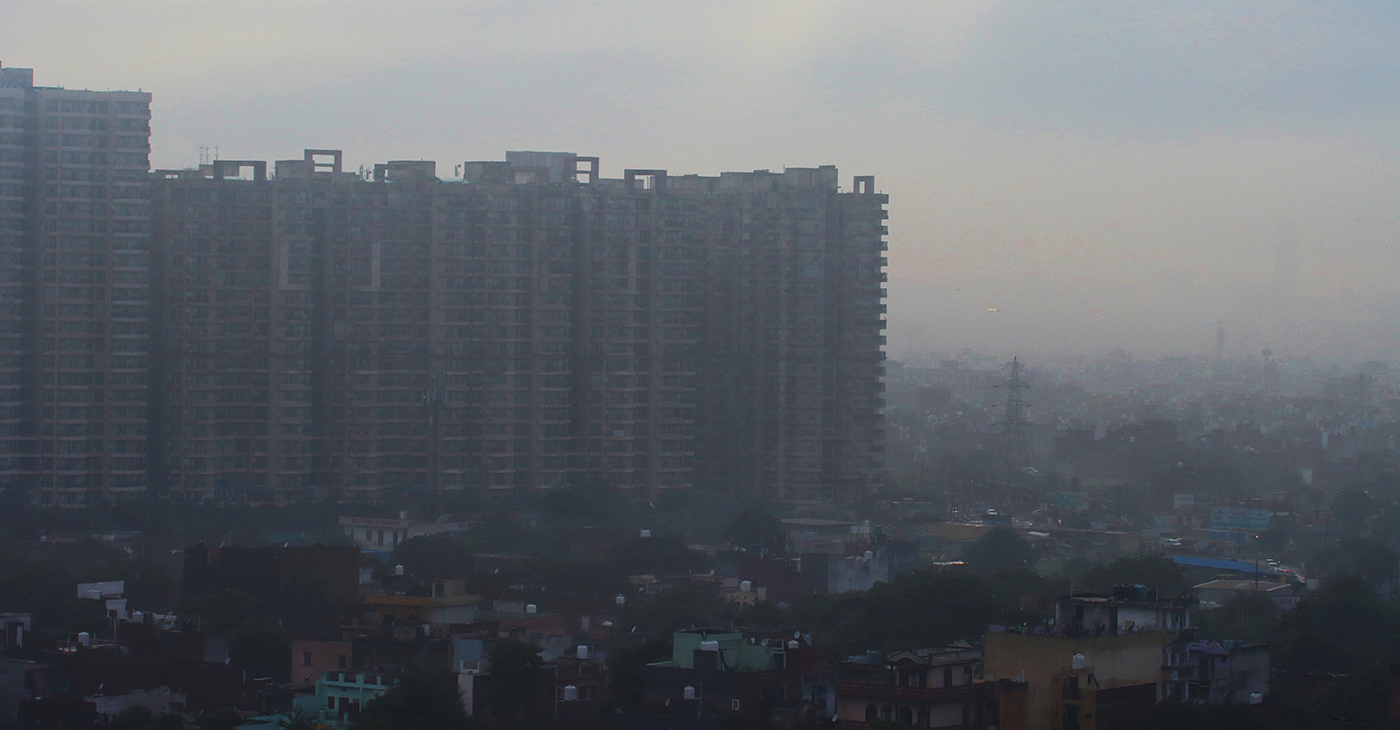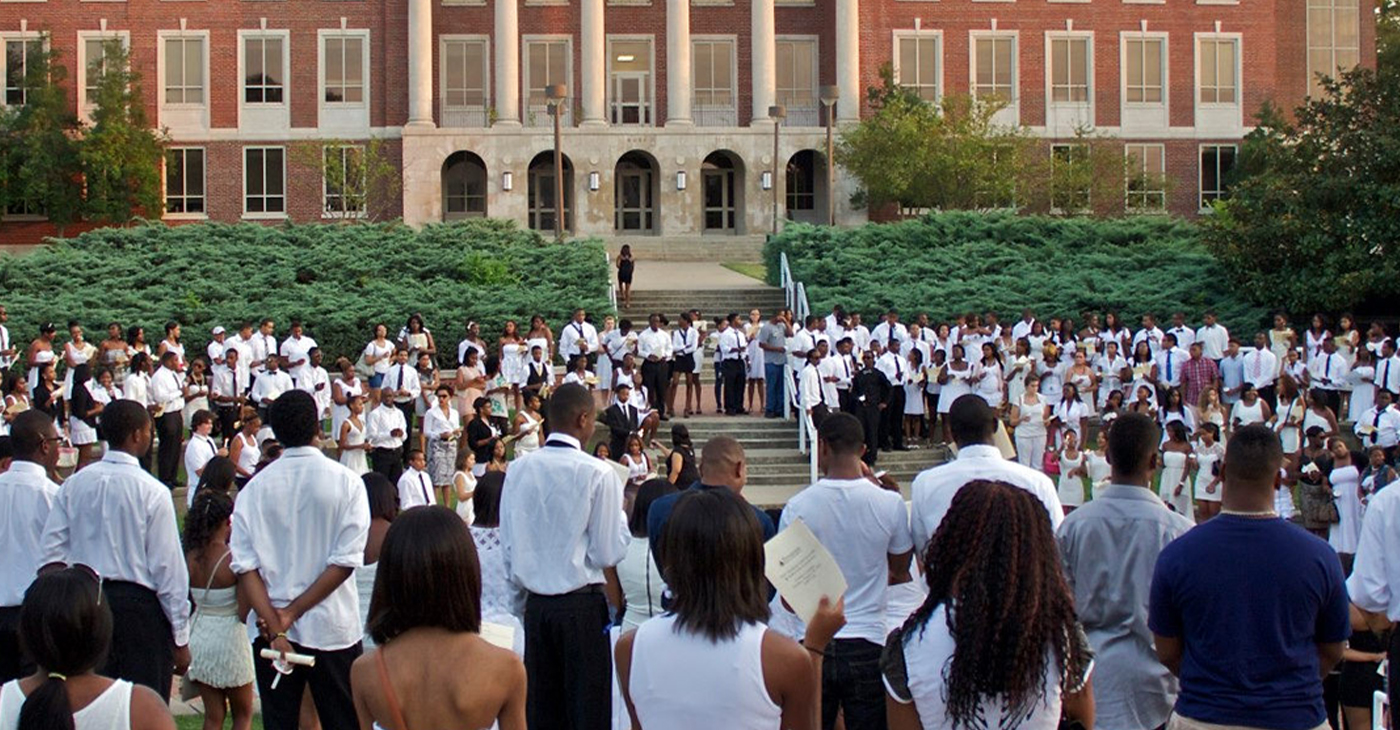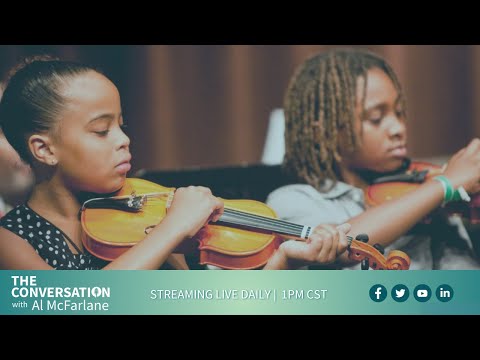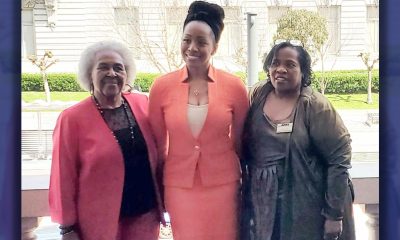#NNPA BlackPress
Neighborhoods of Color are Breathing Unhealthier Air Than in the Previous Two Decades Combined
NNPA NEWSWIRE — The American Lung Association recommends that every federal agency, the White House, and Congress must immediately act to dramatically reduce air and climate pollution and drive an urgent nationwide transition to zero-emission transportation and electricity.
The post Neighborhoods of Color are Breathing Unhealthier Air Than in the Previous Two Decades Combined first appeared on BlackPressUSA.

By Stacy M. Brown, NNPA Newswire Senior National Correspondent
@StacyBrownMedia
According to a report published this week by the American Lung Association, almost half of Americans – 137 million people – are experiencing more days of “very unhealthy” and “hazardous” air quality than in the previous two decades combined.
The Lung Association’s State of the Air report also revealed that 72 million people of color live in counties that received at least one failing grade for ozone and particle pollution.
More than 14 million dwell in areas where health officials doled out failing grades on all three measures.
The report looks at America’s exposure to two types of air pollution: ozone, also called smog, and particle pollution, commonly called soot.
The American Lung Association has issued the State of the Air for 23 years using data analyzed from official air quality monitors.
Officials have pushed the motto that the more you learn about the air you breathe, the more you can protect your health and take steps to make the air cleaner and healthier.
“We’ve seen much better air quality in most areas today than when we started the report. But over the last five years, we’ve seen an uptick, and we attribute a lot of that to climate change,” said Paul Billings, senior vice president of public policy for the American Lung Association.
“We’ve had some of the hottest years on record – creating dry conditions that lead to drought and wildfires,” Billings stated.
State of the Air 2022 shows that an “unacceptable number of Americans are still living in areas with poor air quality that could impact their health,” said Harold Wimmer, National President and CEO of the American Lung Association.
“More than 137 million Americans live in counties that had unhealthy levels of particle pollution or ozone. In addition, communities of color are disproportionately exposed to unhealthy air.”
The report also found that people of color were 61% more likely than white people to live in a county with a failing grade for at least one pollutant and 3.6 times as likely to live in a county with a failing grade for all three pollutants.
Other highlights from the report include:
- Some 72 million people of color live in counties that received at least one failing grade for ozone and/or particle pollution. Over 14 million people of color live in counties that received failing grades on all three measures, including nearly 10 million Hispanics.
- People experiencing poverty—More than 15.9 million people with incomes meeting the federal poverty definition live in counties that received an F for at least one pollutant. Over 2.6 million people in poverty live in counties failing all three measures.
- Children and older adults—Some 31 million children under age 18 and nearly 21 million adults age 65 and over live in counties that received an F for at least one pollutant. Almost 4.7 million children and 2.8 million seniors live in counties failing all three measures.
People with underlying health conditions.
- Asthma—2.3 million children and nearly 10 million adults with asthma live in counties that received an F for at least one pollutant. More than 320,000 children and 1.4 million adults with asthma live in counties failing all three measures.
- Chronic Obstructive Pulmonary Disease (COPD)—Over 6.1 million people with COPD live in counties that received an F for at least one pollutant. Almost 800,000 people with COPD live in counties failing all three measures.
- Lung Cancer—More than 66,000 people diagnosed with lung cancer in 2018 live in counties that received an F for at least one pollutant. And 7,400 people diagnosed with lung cancer live in counties failing all three measures.
- Cardiovascular Disease—More than 8 million people with cardiovascular disease live in counties that received an F for at least one pollutant. More than 1 million people live in counties failing all three measures.
- Pregnancy—Adverse impacts from air pollution have been shown both for those who are pregnant as well as for the developing fetus. More than 1.5 million pregnancies were recorded in 2020 in counties that received at least one F for particle pollution. Of those, 210,000 are in counties that received failing grades for all three measures.
The American Lung Association recommends that every federal agency, the White House, and Congress must immediately act to dramatically reduce air and climate pollution and drive an urgent nationwide transition to zero-emission transportation and electricity.
They said 40% of the investments made to meet these goals must improve air quality, health, and life in underserved communities.
Additionally, local governments have the power to help ensure that city and county operations are zero-emission and that residents can choose zero-emission forms of transportation and electricity, the officials said.
The report’s authors noted that the actions must benefit the communities most impacted by unhealthy air.
Further, officials said individuals also could take action to protect themselves and their families from the dangers of air pollution.
“Regardless of its grade or ranking in this report, any community can experience days with unhealthy levels of air pollution,” the authors stated.
The following are some precautions to reduce risk:
- Check daily air pollution forecasts in your area at airnow.gov. The color-coded forecasts let you know when the air is unhealthy in your community. When the air is bad, move your exercise plans and other activities indoors.
- Protect yourself from wildfire smoke if you live in a fire-prone area. Learn more about using masks and creating a clean room inside your home with our wildfire resources at Lung.org/wildfire.
- Reduce your own contributions to air pollution. Prioritize walking, biking, and public transit over gasoline-powered vehicles. Conserve electricity and purchase your power from clean, non-combustion sources if you can. Don’t burn wood, leaves, or trash. Learn more about how to reduce your impact with our Stand Up For Clean Air initiative at Lung.org/air.
The post Neighborhoods of Color are Breathing Unhealthier Air Than in the Previous Two Decades Combined first appeared on BlackPressUSA.
#NNPA BlackPress
IN MEMORIAM: Ramona Edelin, Influential Activist and Education Advocate, Dies at 78
NNPA NEWSWIRE — Born on September 4, 1945, in Los Angeles, California, activist Ramona Edelin’s early years were marked by a commitment to education and social justice. According to her HistoryMakers biography, after graduating from Fisk University with a Bachelor’s degree in 1967, she pursued further studies at the University of East Anglia in England. She earned her master’s degree before completing her Ph.D. at Boston University in 1981.
The post IN MEMORIAM: Ramona Edelin, Influential Activist and Education Advocate, Dies at 78 first appeared on BlackPressUSA.

By Stacy M. Brown, NNPA Newswire Senior National Correspondent
@StacyBrownMedia
Once upon a time, Black Americans were simply known as colored people, or Negroes. That is until Ramona Edelin came along. The activist, renowned for her pivotal roles in advancing civil rights, education reform, and community empowerment, died at her D.C. residence last month at the age of 78. Her death, finally confirmed this week by Barnaby Towns, a communications strategist who collaborated with Dr. Edelin, was attributed to cancer.
Born on September 4, 1945, in Los Angeles, California, Edelin’s early years were marked by a commitment to education and social justice. According to her HistoryMakers biography, after graduating from Fisk University with a Bachelor’s degree in 1967, she pursued further studies at the University of East Anglia in England. She earned her master’s degree before completing her Ph.D. at Boston University in 1981.
Edelin’s contributions to academia and activism were manifold. She was pivotal in popularizing the term “African American” alongside Rev. Jesse L. Jackson in the late 1980s.
Jackson had announced the preference for “African American,” speaking for summit organizers that included Dr. Edelin. “Just as we were called Colored, but were not that, and then Negro, but not that, to be called Black is just as baseless,” he said, adding that “African American” “has cultural integrity” and “puts us in our proper historical context.”
Later, Edelin told Ebony magazine, “Calling ourselves African Americans is the first step in the cultural offensive,” while linking the name change to a “cultural renaissance” in which Black Americans reconnected with their history and heritage.
“Who are we if we don’t acknowledge our motherland?” she asked later. “When a child in a ghetto calls himself African American, immediately he’s international. You’ve taken him from the ghetto and put him on the globe.”
The HistoryMakers bio noted that Edelin’s academic pursuits led her to found and chair the Department of African American Studies at Northeastern University, where she established herself as a leading voice.
Transitioning from academia to advocacy, Edelin joined the National Urban Coalition in 1977, eventually ascending to president and CEO. During her tenure, she spearheaded initiatives such as the “Say Yes to a Youngster’s Future” program, which provided crucial support in math, science, and technology to youth and teachers of color in urban areas. Her biography noted that Edelin’s efforts extended nationwide through partnerships with organizations like the National Science Foundation and the United States Department of Education.
President Bill Clinton recognized Edelin’s expertise by appointing her to the Presidential Board on Historically Black Colleges and Universities in 1998. She also co-founded and served as treasurer of the Black Leadership Forum, solidifying her standing as a respected leader in African American communities.
Beyond her professional achievements, Edelin dedicated herself to numerous boards and committees, including chairing the District of Columbia Educational Goals 2000 Panel and contributing to the Federal Advisory Committee for the Black Community Crusade for Children.
Throughout her life, Edelin received widespread recognition for her contributions. Ebony magazine honored her as one of the 100 Most Influential Black Americans, and she received prestigious awards such as the Southern Christian Leadership Award for Progressive Leadership and the IBM Community Executive Program Award.
The post IN MEMORIAM: Ramona Edelin, Influential Activist and Education Advocate, Dies at 78 first appeared on BlackPressUSA.
#NNPA BlackPress
Tennessee State University Board Disbanded by MAGA Loyalists as Assault on DE&I Continues
NNPA NEWSWIRE — Recent legislative actions in Tennessee, such as repealing police reform measures enacted after the killing of Tyre Nichols, underscore a troubling trend of undermining local control and perpetuating racist agendas. The new law preventing local governments from restricting police officers’ authority disregards community efforts to address systemic issues of police violence and racial profiling.
The post Tennessee State University Board Disbanded by MAGA Loyalists as Assault on DE&I Continues first appeared on BlackPressUSA.

By Stacy M. Brown, NNPA Newswire Senior National Correspondent
@StacyBrownMedia
Tennessee State University (TSU), the state’s only public historically Black college and university (HBCU), faces a tumultuous future as Gov. Bill Lee dissolved its board, a move supported by racist conservatives and MAGA Republicans in the Tennessee General Assembly, who follow the lead of the twice-impeached, four-times indicted, alleged sexual predator former President Donald Trump. Educators and others have denounced the move as an attack on diversity, equity, and inclusion (DE&I) and a grave setback for higher education.
Critics argue that TSU’s purported financial mismanagement is a manufactured crisis rooted in decades of underinvestment by the state government. They’ve noted that it continues a trend by conservatives and the racist MAGA movement to eliminate opportunities for Blacks in education, corporate America, and the public sector.
Gevin Reynolds, a former speechwriter for Vice President Kamala Harris, emphasizes in an op-ed that TSU’s financial difficulties are not the result of university leadership because a recent audit found no evidence of fraud or malfeasance.
Reynolds noted that the disbanding of TSU’s board is not an isolated incident but part of a broader assault on DE&I initiatives nationwide. Ten states, including Tennessee, have enacted laws banning DE&I policies on college campuses, while governors appointing MAGA loyalists to university trustee positions further undermine efforts to promote inclusivity and equality.
Moreover, recent legislative actions in Tennessee, such as repealing police reform measures enacted after the killing of Tyre Nichols, underscore a troubling trend of undermining local control and perpetuating racist agendas. The new law preventing local governments from restricting police officers’ authority disregards community efforts to address systemic issues of police violence and racial profiling.
The actions echo historical efforts to suppress Black progress, reminiscent of the violent backlash against gains made during the Reconstruction era. President Joe Biden warned during an appearance in New York last month that Trump desires to bring the nation back to the 18th and 19th centuries – in other words, to see, among other things, African Americans back in the chains of slavery, women subservient to men without any say over their bodies, and all voting rights restricted to white men.
The parallels are stark, with white supremacist ideologies used to justify attacks on Black institutions and disenfranchise marginalized communities, Reynolds argued.
In response to these challenges, advocates stress the urgency of collective action to defend democracy and combat systemic racism. Understanding that attacks on institutions like TSU are symptomatic of broader threats to democratic norms, they call for increased civic engagement and voting at all levels of government.
The actions of people dedicated to upholding the principles of inclusivity, equity, and justice for all will determine the outcome of the ongoing fight for democracy, Reynolds noted. “We are in a war for our democracy, one whose outcome will be determined by every line on every ballot at every precinct,” he stated.
The post Tennessee State University Board Disbanded by MAGA Loyalists as Assault on DE&I Continues first appeared on BlackPressUSA.
#NNPA BlackPress
Braxton Haulcy and the Expansion of Walker|West Music Academy
May 24, 2023 – Walker West Music Academy gets an early start on expansion. Join us for a Wednesday episode of The …
The post Braxton Haulcy and the Expansion of Walker|West Music Academy first appeared on BlackPressUSA.

May 24, 2023 – Walker West Music Academy gets an early start on expansion. Join us for a Wednesday episode of The …
The post Braxton Haulcy and the Expansion of Walker|West Music Academy first appeared on BlackPressUSA.
-

 Activism4 weeks ago
Activism4 weeks agoOakland Post: Week of March 27 – April 2, 2024
-

 #NNPA BlackPress4 weeks ago
#NNPA BlackPress4 weeks agoCOMMENTARY: D.C. Crime Bill Fails to Address Root Causes of Violence and Incarceration
-

 #NNPA BlackPress4 weeks ago
#NNPA BlackPress4 weeks agoMayor, City Council President React to May 31 Closing of Birmingham-Southern College
-

 #NNPA BlackPress4 weeks ago
#NNPA BlackPress4 weeks agoBeloved Actor and Activist Louis Cameron Gossett Jr. Dies at 87
-

 Community1 week ago
Community1 week agoFinancial Assistance Bill for Descendants of Enslaved Persons to Help Them Purchase, Own, or Maintain a Home
-

 Activism3 weeks ago
Activism3 weeks agoOakland Post: Week of April 3 – 6, 2024
-

 Business1 week ago
Business1 week agoV.P. Kamala Harris: Americans With Criminal Records Will Soon Be Eligible for SBA Loans
-

 Activism2 weeks ago
Activism2 weeks agoOakland Post: Week of April 10 – 16, 2024




















































